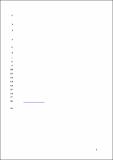Por favor, use este identificador para citar o enlazar a este item:
http://hdl.handle.net/10261/115215COMPARTIR / EXPORTAR:
 SHARE SHARE
 CORE
BASE CORE
BASE
|
|
| Visualizar otros formatos: MARC | Dublin Core | RDF | ORE | MODS | METS | DIDL | DATACITE | |

| Título: | Past logging, drought and pathogens interact and contribute to forest dieback |
Autor: | Sangüesa-Barreda, G. CSIC ORCID ; Camarero, Jesús Julio CSIC ORCID ; Oliva, Jonás; Montes, Fernando; Gazol Burgos, Antonio CSIC ORCID | Palabras clave: | Climate warming Dencroecology Drought stress Forest die-off Abies alba |
Fecha de publicación: | 2015 | Editor: | Elsevier | Citación: | Agricultural and Forest Meteorology 208: 85-94 (2015) | Resumen: | Forest dieback is one of the most widespread responses to global-change drivers, such as climate warming-related drought stress and the spread of pathogens. Although both climatic and biotic stressors have been studied separately, much less is known on how drought and pathogens interact and induce dieback, particularly in formerly used forests. We determine the roles played by each of those drivers as factors causing recent dieback in three Pyrenean silver fir stands: a managed site subjected to past logging and two unmanaged sites not logged for the past 50 years. The age, size, recent competition, and basal-area increment (BAI) trends of non-declining and declining trees, and the presence of fungal pathogens were investigated. Growth patterns at yearly to decadal time scales were compared to distinguish the roles and interactions played by the different stressors. In the managed site, declining trees displayed low growth already before logging (1950-1970s). In both unmanaged sites, declining and non-declining trees displayed divergent growth patterns after extreme droughts, indicating that dieback was triggered by severe water deficit. We did not find indications that fungal pathogens are the primary drivers of dieback, since a low proportion of declining trees were infested by primary pathogens (10%). However, trees with the primary fungal pathogen Heterobasidion showed lower BAI than non-declining trees. On the other hand, the secondary fungal pathogen Amylostereum was isolated from a higher number of trees than expected by chance. These findings highlight the importance of legacies, such as the past use in driving recent forest dieback. Past forest use could predispose to dieback by selecting slow-growing trees and thus, making some them more vulnerable to drought and fungal pathogens. © 2015 Elsevier B.V. | Versión del editor: | http://dx.doi.org/10.1016/j.agrformet.2015.04.011 | URI: | http://hdl.handle.net/10261/115215 | DOI: | 10.1016/j.agrformet.2015.04.011 | Identificadores: | doi: 10.1016/j.agrformet.2015.04.011 issn: 0168-1923 |
| Aparece en las colecciones: | (INIA) Artículos (IPE) Artículos |
Ficheros en este ítem:
| Fichero | Descripción | Tamaño | Formato | |
|---|---|---|---|---|
| Sanguesa_Past loggings_AGRFORMET2015.pdf | 1,42 MB | Adobe PDF |  Visualizar/Abrir |
CORE Recommender
SCOPUSTM
Citations
68
checked on 11-abr-2024
WEB OF SCIENCETM
Citations
65
checked on 27-feb-2024
Page view(s)
534
checked on 18-abr-2024
Download(s)
506
checked on 18-abr-2024
Google ScholarTM
Check
Altmetric
Altmetric
NOTA: Los ítems de Digital.CSIC están protegidos por copyright, con todos los derechos reservados, a menos que se indique lo contrario.
